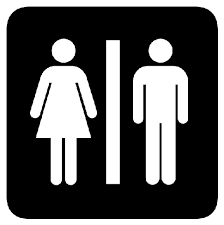


When claiming that women are in the inferior position, advocates usually cite two metrics: income and domestic violence. I don't disagree that by those measures, women are not doing as well as men. But those aren't the only measure of quality of life, and it is a symptom of our culture's twisted values that income is usually considered the most relevant metric. I argue that mental and physical health and life expectancy are more valid measures of quality of life. By those metrics, men have the inferior status.
Quality of Life Indicators for Men in the USA
Violence
Although women are more likely to be victims of domestic violence, men are more likely to be victims of violence overall.
“Hospital emergency departments treated approximately 1.4 million people for non-fatal injuries from confirmed or suspected violence during 1994, the Justice Department announced today. Of these injuries, 1.3 million were confirmed to have been caused by violent attacks. An additional 82,000 people were injured in incidents of suspected violence. The Department's Bureau of Justice Statistics (BJS) said 94 percent had been injured during assaults, 5 percent had been injured during rapes or sexual assaults and 2 percent during robberies. Sixty percent were males.” Source
"Rate of violent victimization, by demographic characteristics of victims 2012
Per thousand for violent crime:
Male 29.1
female 23.3
Per thousand for serious violent crime:
male 9.4
female 6.6"
"More men are raped in the U.S. than woman, according to figures that include sexual abuse in prisons. In 2008, it was estimated 216,000 inmates were sexually assaulted while serving time, according to the Department of Justice figures. That is compared to 90,479 rape cases outside of prison...." Source
"Is the US the only country where more men are raped than women? That's the claim in this n+1 piece, which is well worth a read. In January, prodded in part by outrage over a series of articles in the New York Review of Books, the Justice Department finally released an estimate of the prevalence of sexual abuse in penitentiaries. The reliance on filed complaints appeared to understate the problem. For 2008, for example, the government had previously tallied 935 confirmed instances of sexual abuse. After asking around, and performing some calculations, the Justice Department came up with a new number: 216,000. That's 216,000 victims, not instances. These victims are often assaulted multiple times over the course of the year. The Justice Department now seems to be saying that prison rape accounted for the majority of all rapes committed in the US in 2008, likely making the United States the first country in the history of the world to count more rapes for men than for women.
Those numbers are not quite correct, but they are nonetheless horrifying. First of all, "sexual assault" is not always the same as "rape" and includes a variety of behaviour that wouldn't meet the legal standard for rape. So it's not clear that there are actually more rapes of men than women, or more rapes of prisoners than non-prisoners....." Source
Housing
Men are much more likely to be homeless.
According to the US Department of Housing and Urban Development’s June 2010 Annual Homeless Assessment Report to Congress (2010 AHAR)1, on a given night in January 2010: • 407,966 individuals were homeless in shelters, transitional housing programs, or on the streets (this number does not include persons in family households)i • 109,812 individuals were chronically homeless, a 1% decrease from the previous year Over the course of a year (October 2009-September 2010)ii, the 2010 AHAR found that2: • 1,593,150 individuals experienced homelessness…
Current Statistics on the Prevalence and Characteristics of People Experiencing Homelessness in the United States (Last Updated July 2011)
Among all sheltered individuals over the course of a year (October 2009-September 2010) 62% were male 38% were female Source
Health and Life Expectancy
Men are much more likely to experience illness, injury or death due to their work.
"...The overall injury/illness rate was significantly lower in females than males (5.5 vs. 11.5 per 100 employees), a trend that extended to all major industrial classes with the exception of service and agricultural sectors..." Source
"Fatal occupational injuries 2007 Men 5,228 Women 429
Rate by hours worked (in millions)
Men 6.4
Women 0.7"
Source
"...The overall injury/illness rate was significantly lower in females than males (5.5 vs. 11.5 per 100 employees), a trend that extended to all major industrial classes with the exception of service and agricultural sectors..." Source
"In 2011, life expectancy at birth was 78.7 years for the total U.S. population, 76.3 years for males, and 81.1 years for females. ... In each racial/ethnic group, females had higher life expectancies than males..." Source
Mental Health
The suicide rate says a lot about men's mental health and overall quality of life.
"Suicide was the seventh leading cause of death for males and the fifteenth leading cause of death for females in 2007. Almost four times as many males as females die by suicide." Source
WASHINGTON—When it comes to mental illness, the sexes are different: Women are more likely to be diagnosed with anxiety or depression, while men tend toward substance abuse or antisocial disorders, according to a new study published by the American Psychological Association.
Published online in APA’s Journal of Abnormal Psychology®, the study looked at the prevalence by gender of different types of common mental illnesses. The researchers also found that women with anxiety disorders are more likely to internalize emotions, which typically results in withdrawal, loneliness and depression. Men, on the other hand, are more likely to externalize emotions, which leads to aggressive, impulsive, coercive and noncompliant behavior, according to the study. The researchers demonstrated that it was differences in these liabilities to internalize and to externalize that accounted for gender differences in prevalence rates of many mental disorders…. Source
Substance abuse is another strong indicator of overall quality of life.
"Harmful use of alcohol results in the death of 2.5 million people annually, causes illness and injury to millions more, and increasingly affects younger generations and drinkers in developing countries.
• Nearly 4% of all deaths are related to alcohol. Most alcohol-related deaths are caused by alcohol result from injuries, cancer, cardiovascular diseases and liver cirrhosis.
• 6.2% of male deaths are related to alcohol, compared to 1.1% of female deaths."
Source
"Among those who died from drug overdose in 2010: Men were nearly twice as likely as women to die.
Among people who misused or abused drugs and received treatment in emergency departments in 2011: 56% were males..." Source
Incarceration
Men are much mored likely to be incarcerated.
"Female 13,033 Inmates 6.7% of Inmates
Male 182,642 Inmates 93.3% % of Inmates"
Last Updated: Saturday, 26 March 2016
Source
"...Males had an imprisonment rate of 943 per 100,000 male U. S. residents, 14 times higher than the rate for females (67 per 100,000 female U.S. residents)..." Source
Education
Men are less likely to complete high school and college
"The percentage of high school dropouts, ages 16-24, has declined since 1960. The percentage of male students who dropped out of high school has decreased from 27.8% in 1960 to 8.5% in 2010. The percentage of female dropouts has decreased from 26.7% to 6.3%." Source
"...Among first-time, full-time undergraduate students who began seeking a bachelor's degree at a 4-year degree- granting institution in fall 2007, the 6-year graduation rate was 58 percent at public institutions, 65 percent at private nonprofit institutions, and 32 percent at private for-profit institutions. The 6-year graduation rate was 56 percent for males and 62 percent for females; it was higher for females than for males at both public (60 vs. 55 percent) and private nonprofit institutions (68 vs. 62 percent). However, at private for-profit institutions males had a higher graduation rate than females (36 vs. 28 percent)...." Source
Considering these facts, the obvious conclusion is that men in the USA generally tend to experience a lower quality of life than women, despite men having higher incomes. It appears to me that disagreement with that observation must be based on a belief that income is a better metric for quality of life than all of the other factors I listed. Consider this: would you take a new job with a 20% pay raise if you knew it would quadruple the liklihood that you will commit suicide or suffer a fatal work injury and shorten your life expectancy by four years?
Understanding that men experience a lower quality of life than women does not mean that sexism does not exist. Rather, it suggests that sexism is alive and well and men are victimized even more than women. We need to realize that sexism hurts everyone, not just females. Genuine freedom, equality and justice for all is the best solution, not just under the law, but in how we educate and raise our children and whenever we interact with each other.
![]() Back to Oranj Productions Home
Page
Back to Oranj Productions Home
Page
Contact Info
All content Copyright 1993-2016 Oranj Productions.
All Rights Reserved.